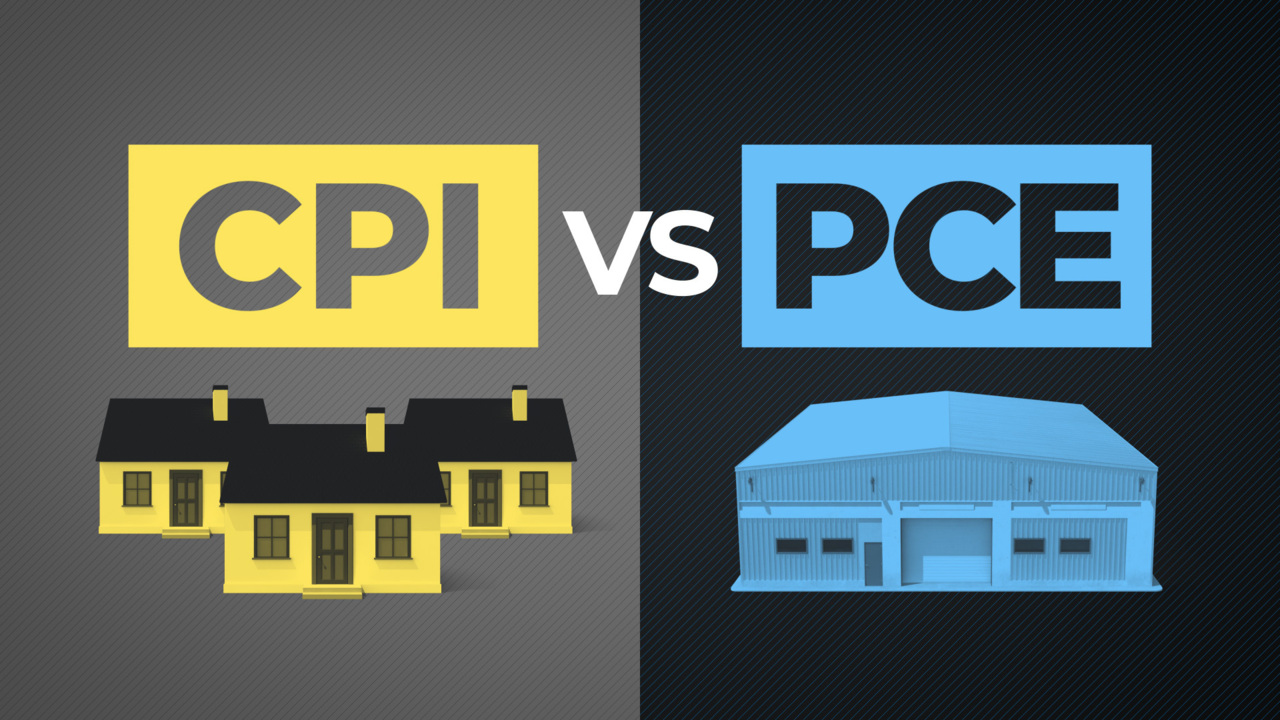
NEWS CLIP: the pce price index as you know has become this favorite gauge of inflation.
NEWS CLIP: the fed’s preferred measure is PCE.
NEWS CLIP: that is the fed’s favorite inflation gauge.
SIMONE DEL ROSARIO: YES THERE’S MORE THAN ONE WAY TO MEASURE INFLATION.
AND THE BETTER KNOWN CONSUMER PRICE INDEX – IS NOT THE FED’S FAVORITE ONE.
SO WHEN FEDERAL RESERVE CHAIR JEROME POWELL SAYS:
JEROME POWELL: my colleagues and I are strongly committed to bringing inflation back down to our 2% goal.
SIMONE DEL ROSARIO: HE MEANS PERSONAL CONSUMPTION EXPENDITURES, WHICH IS RUNNING ROUGHLY 2 POINTS LOWER THAN THE CONSUMER PRICE INDEX THIS YEAR.
SO WHAT’S THE DIFFERENCE BETWEEN PCE AND CPI?
LET’S GET THIS STRAIGHT.
CPI IS CALCULATED SURVEYING HOUSEHOLDS. PCE DATA COMES FROM SURVEYING SUPPLIERS.
FITCH RATINGS CHIEF ECONOMIST BRIAN COULTON: they’re both basically trying to measure the same thing. They take a basket of goods and services, which is supposed to represent what the typical American household spends their money on, and measures how much the price of buying that basket has gone up.
SIMONE DEL ROSARIO: BUT THOSE BASKETS LOOK A LITTLE DIFFERENT. FOR ONE, CPI LOOKS AT HEALTH COSTS DIRECTLY DRAWING FROM AMERICANS’ WALLETS.
WHILE P-C-E INCLUDES THE COST OF HEALTH CARE INCURRED BY GOVERNMENT PROGRAMS, AS WELL AS PRIVATE INSURERS.
THAT DIFFERENCE IS EVIDENT IN THE WEIGHT OF ITEMS IN EACH BASKET.
MEDICAL CARE IS A MUCH BIGGER PART OF THE PIE IN P-C-E…WHILE C-P-I PLACES ENORMOUS WEIGHT ON HOUSING.
BRIAN COULTON: the fact that rents are growing more rapidly than underlying inflation as a whole that’s driving this unusual difference at the moment.
SIMONE DEL ROSARIO: ALONG WITH THIS, PCE CAPTURES REAL WORLD BUYING BEHAVIOR BY FREQUENTLY ADJUSTING THE WEIGHTS IN ITS BASKET.
BRIAN COULTON: when the price of say gasoline goes up, or the price of meat goes up, what tends to happen is that consumers, households will spend less on those products, or more on cheaper products. So the weight of say beef would go down, if it gets more expensive.
SIMONE DEL ROSARIO: BUT CPI ONLY UPDATES EVERY TWO YEARS – SO BEEF MIGHT CARRY MORE WEIGHT THAN IT SHOULD, LEADING TO A HIGHER OVERALL INFLATION RATE.
JEROME POWELL: we’ve long used PCE because we think it’s just better at capturing the inflation that people actually face in their lives.
SIMONE DEL ROSARIO: SO WHY IS CPI SYNONYMOUS WITH INFLATION – WHEN PCE IS MORE COMPREHENSIVE?
BRIAN COULTON: I think first mover advantage is a very big deal for the CPI. The fact that number comes out first means it gets most of the attention. And the PCE sort of follows up.
SIMONE DEL ROSARIO: BUT WITH THE CURRENT – STARK GAP BETWEEN THE TWO – THE FED CAN’T IGNORE WHAT CPI SAYS ON ITS PATH TO 2%.
BRIAN COULTON: if PCE is two and CPI is two and a half, that’d be quite okay with that, because that’s this historical wedge between the two. But if it stays at three to four, I think there’d be thinking, well, there’s an element of the inflation process here that has not come back. And we need to be cautious about loosening policy too much.






